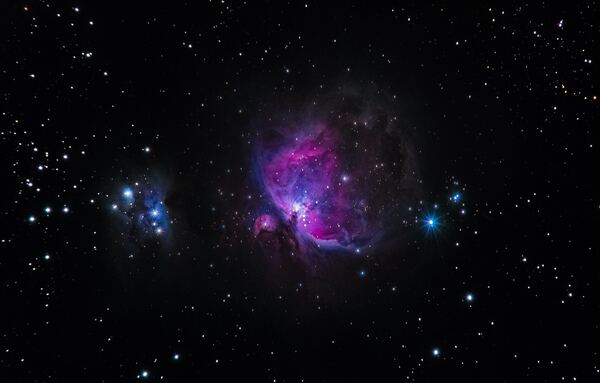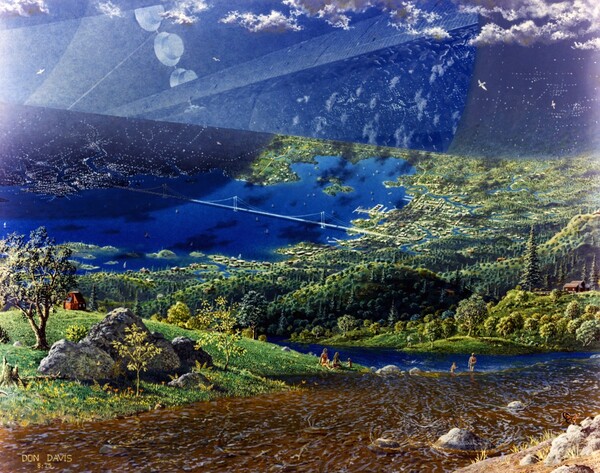Environmental Impact Of O’Neill Cylinders

The environmental impact of O’Neill Cylinders on outer space and the Earth. Find out more about Environmental Impact Of O’Neill Cylinders.
Are you looking for information about building O’Neill Cylinders as a method of Space Colonization? We look at the benefits and concerns of this proposed solution.
As humanity continues to explore and expand our presence in space, the idea of building O’Neill Cylinders as a method of space colonization is gaining increasing attention.

O’Neill Cylinders are large, rotating space habitats that would simulate Earth’s environment and provide a self-sustaining environment for long-term human habitation.
The concept of O’Neill Cylinders has many potential benefits, including the ability to provide a self-sufficient living environment for humans in space, the potential for space tourism and industry, and the potential to create a backup plan for humanity in case of a global catastrophe on Earth.
Additionally, the use of O’Neill Cylinders could reduce the need for expensive and risky resupply missions to space stations, as these habitats would be able to produce their own food, water, and oxygen.
However, there are also significant concerns associated with building O’Neill Cylinders, including the cost and feasibility of construction, the psychological and social effects of living in a closed environment for extended periods of time, and the potential risks associated with space travel and settlement.
We will explore the potential benefits and concerns of building O’Neill Cylinders as a method of space colonization, and weigh the advantages and disadvantages of this approach in light of our current understanding of space exploration and settlement.
By examining these issues, we can gain a better understanding of the potential opportunities and challenges associated with building O’Neill Cylinders, and help inform future decisions regarding space exploration and colonization.
O’Neill Cylinders: A futuristic solution for long-term space colonization?
The engineering behind O’Neill Cylinders: Challenges and solutions for sustainable space habitats
O’Neill Cylinders vs. Traditional Space Stations: Advantages and limitations for space colonization
Life inside an O’Neill Cylinder: Social and psychological implications for space settlers
The economic feasibility of O’Neill Cylinders for space tourism and industry
O’Neill Cylinders and space agriculture: A sustainable solution for food production in space
Building O’Neill Cylinders in space: The role of 3D printing and autonomous construction
The environmental impact of O’Neill Cylinders on outer space and the Earth
O’Neill Cylinders and the future of human evolution: How living in space could change our biology
O’Neill Cylinders in Science Fiction
An O’Neill cylinder is a hypothetical space settlement concept proposed by physicist Gerard K. O’Neill in the 1970s. It is a rotating space habitat designed to simulate Earth’s gravity and atmosphere by rotating around its axis.
The cylinder is large enough to contain a self-sustaining ecosystem and can house tens of thousands of people. The habitat consists of two counter-rotating cylinders connected by a central hub, with mirrors on the outer surface to reflect sunlight onto the interior of the cylinder.
The concept of O’Neill cylinders has been explored in science fiction and has gained interest from scientists and space enthusiasts as a potential solution for long-term human habitation in space.
O’Neill Cylinders have been proposed as a viable space settlement for several reasons.
However, there are also several challenges associated with the development and operation of O’Neill Cylinders.
These include the high cost of construction, the need for advanced technology and materials, and the potential psychological and social effects of living in a closed environment for extended periods of time.
Nonetheless, O’Neill Cylinders remain an intriguing and potentially viable concept for long-term human habitation in space.
Building an O’Neill Cylinder is a significant engineering challenge, but it is theoretically possible with existing technology.
The main components of an O’Neill Cylinder are the two cylindrical habitats and the central hub, which connect the two habitats and contain the life support systems and other infrastructure.
The cylindrical habitats would need to be made from lightweight and strong materials, such as carbon fiber composites or advanced ceramics, to withstand the stresses of rotation and support the weight of the interior components.
The hub would need to be designed to provide structural support and contain the necessary systems for air and water recycling, waste management, and power generation.
One of the biggest challenges in building an O’Neill Cylinder would be the transportation and assembly of the structure in space.
This would require a significant amount of resources and would likely involve multiple launches of heavy lift rockets or construction in orbit using robotic systems.
The cost of building an O’Neill Cylinder would be substantial, and would likely require significant investments from both governments and private companies.
However, advances in materials science, robotics, and other technologies are making the concept more feasible and could eventually make O’Neill Cylinders a viable option for space settlement.
Life on board an O’Neill Cylinder would be very different from life on Earth, but the habitat would be designed to simulate Earth’s environment as closely as possible.
Life on board an O’Neill Cylinder would be challenging, but also potentially rewarding and fulfilling, as the inhabitants would be pioneers in space settlement and would be contributing to the development of a new human civilization beyond Earth.
The rotating cylinder would create an artificial gravity that would be similar to Earth’s, allowing people to move around and perform tasks without experiencing the negative effects of microgravity.
The interior of the cylinder would be divided into different levels or tiers, with residential areas, commercial and industrial zones, and agricultural areas. The lighting and temperature would be regulated to simulate day and night cycles, and maintain a comfortable living environment.
Food would be grown inside the cylinder using hydroponic or aeroponic farming techniques, which would provide fresh fruits and vegetables to the inhabitants. Livestock could also be raised for meat and dairy products. Waste would be recycled and reused as much as possible, and any excess would be disposed of in a sustainable manner.
Social life on board the cylinder would likely be different from life on Earth, as the inhabitants would be living in a closed environment and would need to rely on each other for support and companionship.
Educational and recreational activities would be provided to maintain mental health and well-being, and social interaction with other O’Neill Cylinders or Earth could be facilitated through communication systems.
The decision to begin an O’Neill-type colony would depend on a variety of factors, including the availability of resources, the cost and feasibility of construction, and the potential benefits and risks associated with such a project.
If there is a clear need for long-term human habitation in space, such as for scientific research, resource exploration, or as a backup plan for humanity in case of a global catastrophe on Earth, then an O’Neill-type colony could be a viable solution.
However, it is important to consider the significant challenges and risks associated with such a project. The cost of construction and maintenance would be substantial, and would require significant investments from governments and private companies.
The transportation and assembly of the structure in space would also be a major challenge, requiring advanced robotics and space construction techniques.
Furthermore, the psychological and social effects of living in a closed environment for extended periods of time should also be considered.
The inhabitants would need to be carefully selected and trained to cope with the isolation and confinement of life in space.
While an O’Neill-type colony has the potential to provide a sustainable and self-sufficient environment for long-term human habitation in space, the decision to begin such a project should be carefully considered and evaluated based on a variety of factors.
O’Neill Cylinders is one of the topics in our series of articles about Space Colonization. Follow the link below for more ideas on the topic.

The environmental impact of O’Neill Cylinders on outer space and the Earth. Find out more about Environmental Impact Of O’Neill Cylinders.